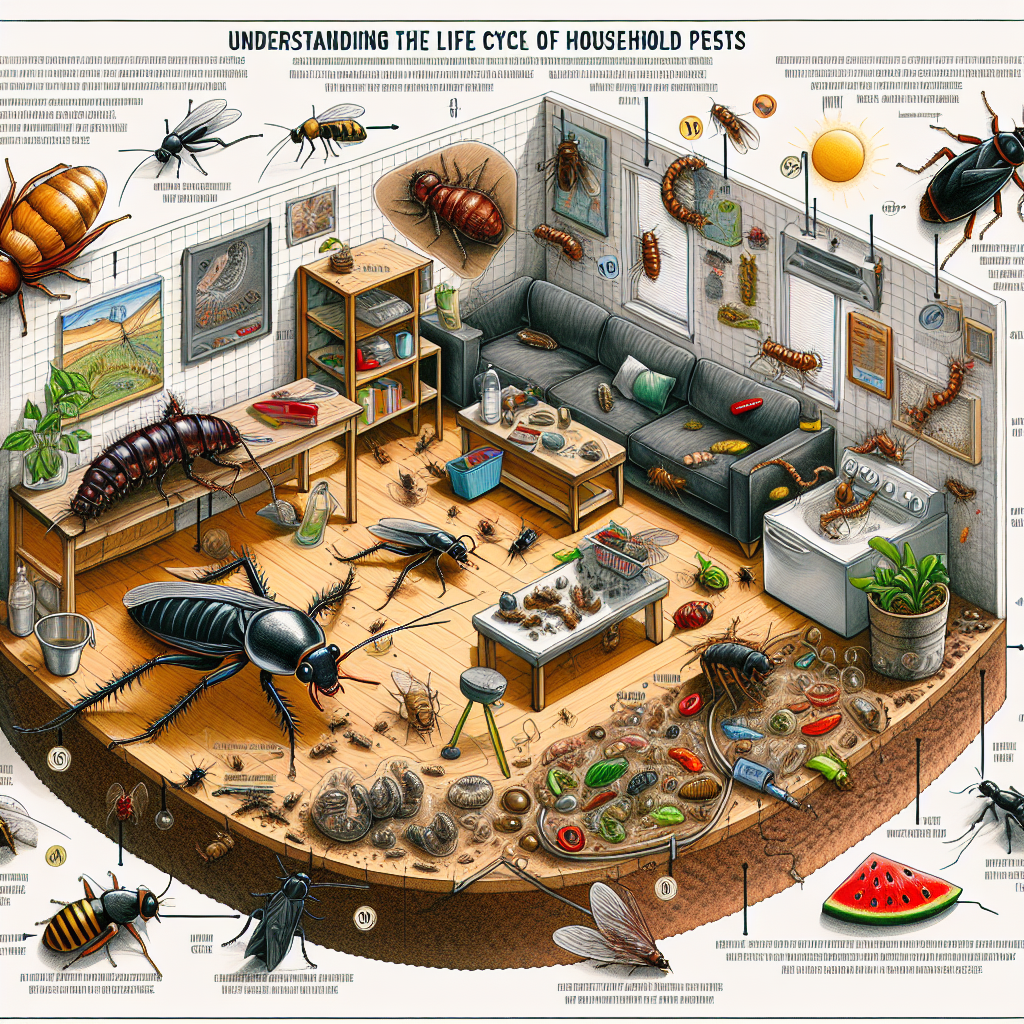Household pests—these tiny creatures can bring big headaches. From cockroaches to bedbugs, understanding their life cycles is critical in preventing infestations and ensuring a pest-free home. In this article, we’ll take a closer look at the life cycle of common household pests, reveal practical preventive strategies, and provide you with the knowledge to reclaim your space.
The Importance of Recognizing Pest Life Cycles
Understanding the life cycles of pests is essential for effective management. Many pests go through multiple stages of development, each requiring different approaches for control. By familiarizing yourself with these life stages, you can identify infestations early and implement timely interventions.
Common Household Pests and Their Life Cycles
1. Cockroaches: Resilient Survivors
Egg Stage: Cockroaches start as eggs, which are often encased in a protective capsule called an ootheca. Depending on the species, a single ootheca can contain anywhere from 10 to 50 eggs.
Nymph Stage: Once the eggs hatch, young cockroaches, called nymphs, emerge. These nymphs resemble miniature adults but lack wings. They go through several molts before reaching maturity, requiring food and water at each stage.
Adult Stage: Cockroaches can live up to a year or longer in the right conditions. Adult cockroaches reproduce rapidly, making early detection critical.
2. Ants: The Social Structures of the Insect World
Egg Stage: Ant colonies typically begin with a queen laying eggs. These eggs are often cared for by worker ants.
Larvae Stage: The eggs hatch into larvae, which are nourished by worker ants. This stage is vulnerable and requires protection.
Pupal Stage: After the larvae stage, ants enter a pupal stage, during which they undergo metamorphosis.
Adult Stage: Adult ants emerge ready to contribute to the colony. Depending on the species, they may either take on foraging roles or support the queen.
3. Bedbugs: Unwanted Nighttime Guests
Egg Stage: Bedbug eggs are tiny and white, making them hard to spot. A female can lay up to five eggs a day.
Nymph Stage: Once hatched, bedbug nymphs go through several molts before becoming adults. Each molt requires a blood meal.
Adult Stage: Adult bedbugs can survive for months without feeding, making them particularly challenging to eliminate once they invade your home.
The Environmental Conditions Favoring Pest Life Cycles
Household pests thrive in conditions that offer food, water, and shelter. Understanding these environmental factors can help you minimize the risk of infestations.
Food Sources
Pests feast on various food items, including crumbs, pet food, and garbage. Keeping food sealed and stored properly can significantly reduce the chances of attracting pests to your home.
Water Accessibility
Many pests, including cockroaches and ants, are drawn to moisture. Leaky pipes, standing water, or even overly humid environments provide ideal conditions for these pests to breed.
Shelter Availability
Pests love to hide in small crevices and dark places. Cluttered environments give them the perfect sanctuary. Ensuring your home is tidy and free of cardboard boxes or other hiding spots can help keep them at bay.
Practical Strategies for Prevention
Regular Cleaning
Consistent cleaning routines can help deter pests. Regularly vacuuming, sweeping, and sanitizing surfaces can remove food particles that might attract unwanted visitors.
Sealing Entry Points
Inspect windows, doors, and walls for cracks and crevices. Sealing these openings can prevent pests from entering your home in the first place.
Decluttering Your Space
By reducing clutter, you deny pests the perfect hiding spots they crave. Keep storage areas neat and organized to make your home less inviting to them.
Professional Pest Control
If you find yourself dealing with an infestation, it’s often best to consult a professional pest control service. They can provide targeted treatments based on the specific pests you are facing.
Conclusion: Empower Yourself Against Household Pests
Understanding the life cycles of household pests is a powerful tool in safeguarding your home. By recognizing the stages of their development and implementing preventive measures, you can effectively manage and eliminate these unwanted guests. Remember, knowledge is your first line of defense against pests. Stay vigilant, stay informed, and you can ensure a cleaner, pest-free living environment for you and your family.
By enhancing your understanding of pest behavior and prevention, you take the first steps towards reclaiming your home. Don’t wait until an infestation strikes; be proactive and educate yourself today!


